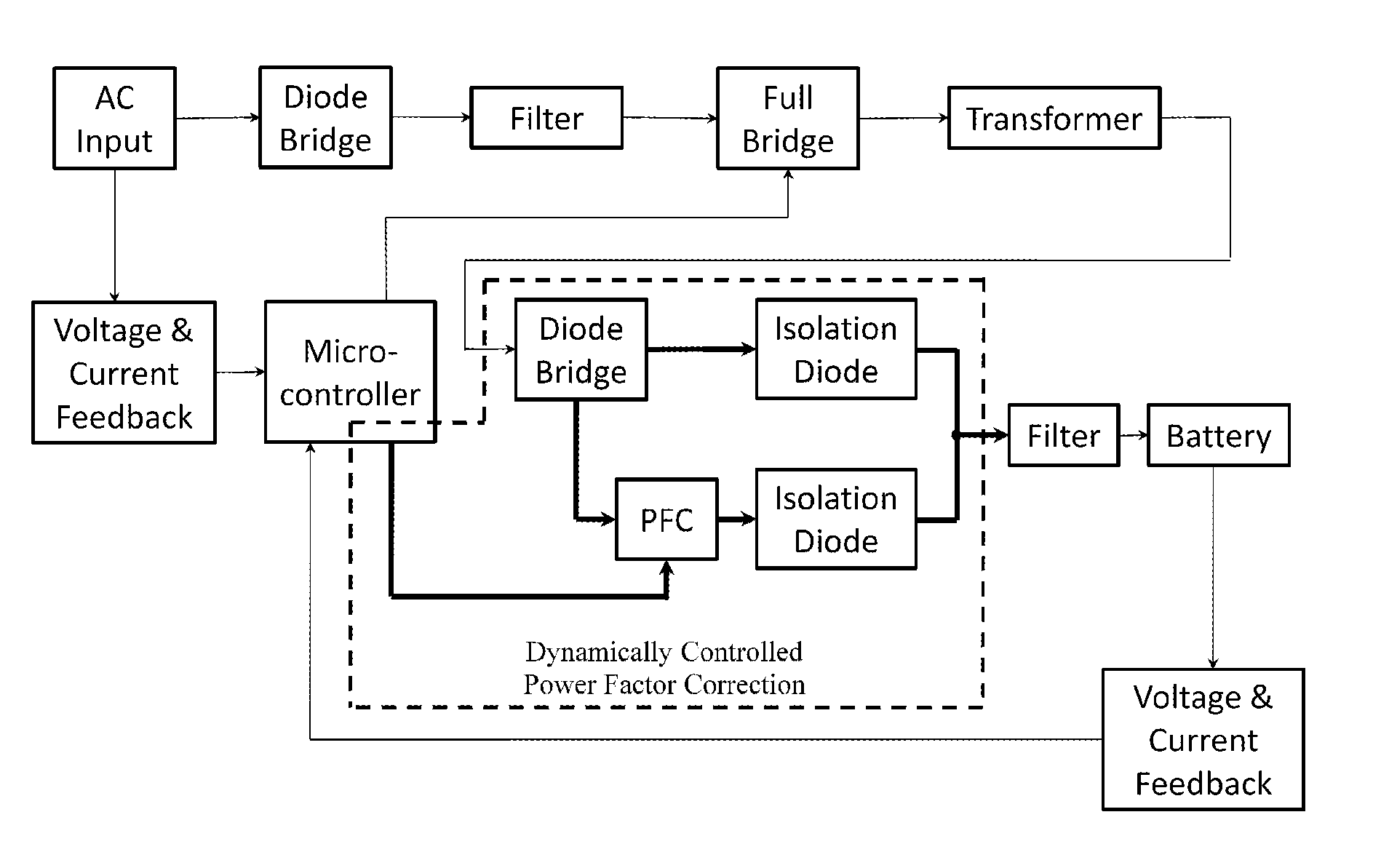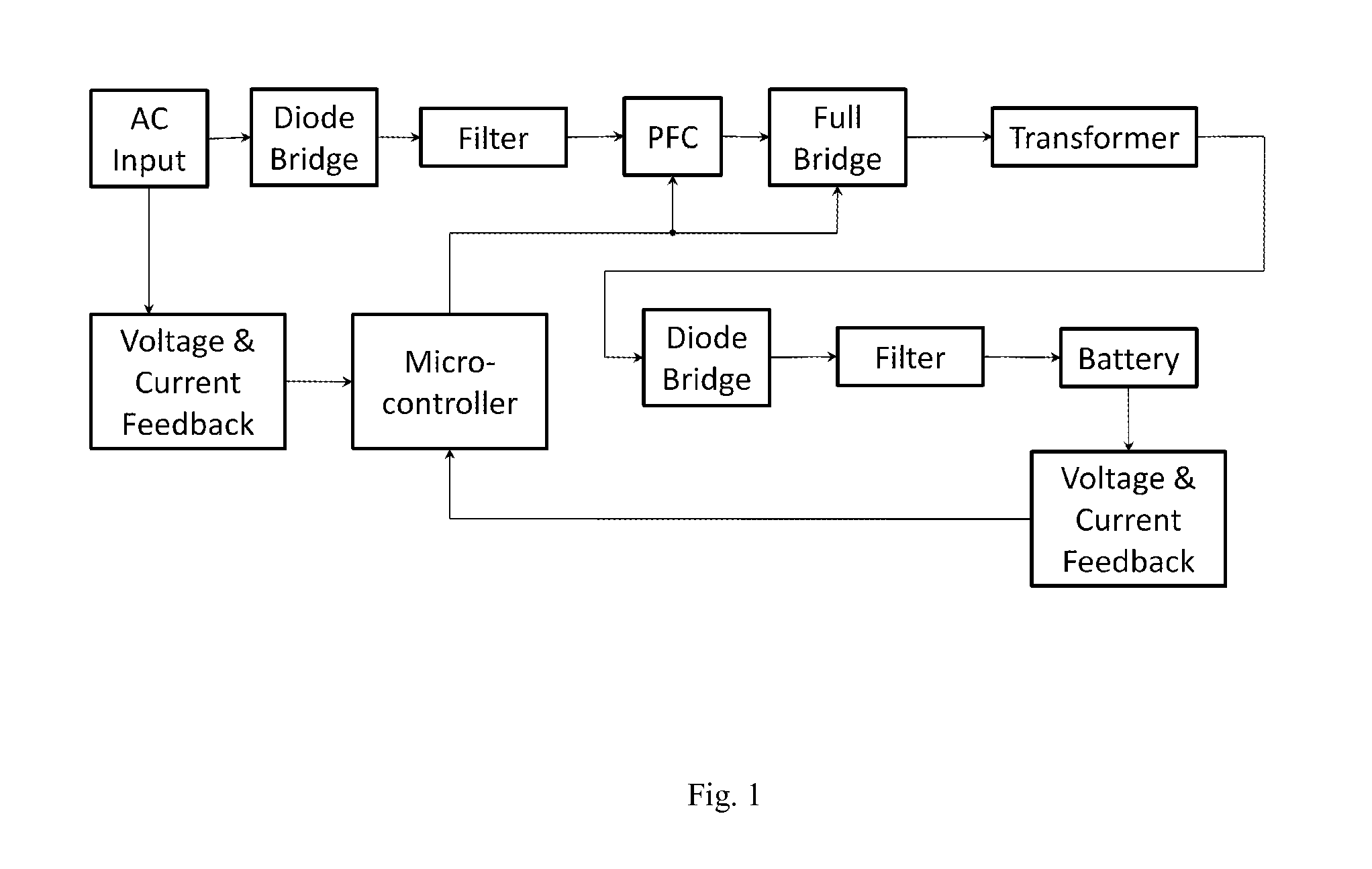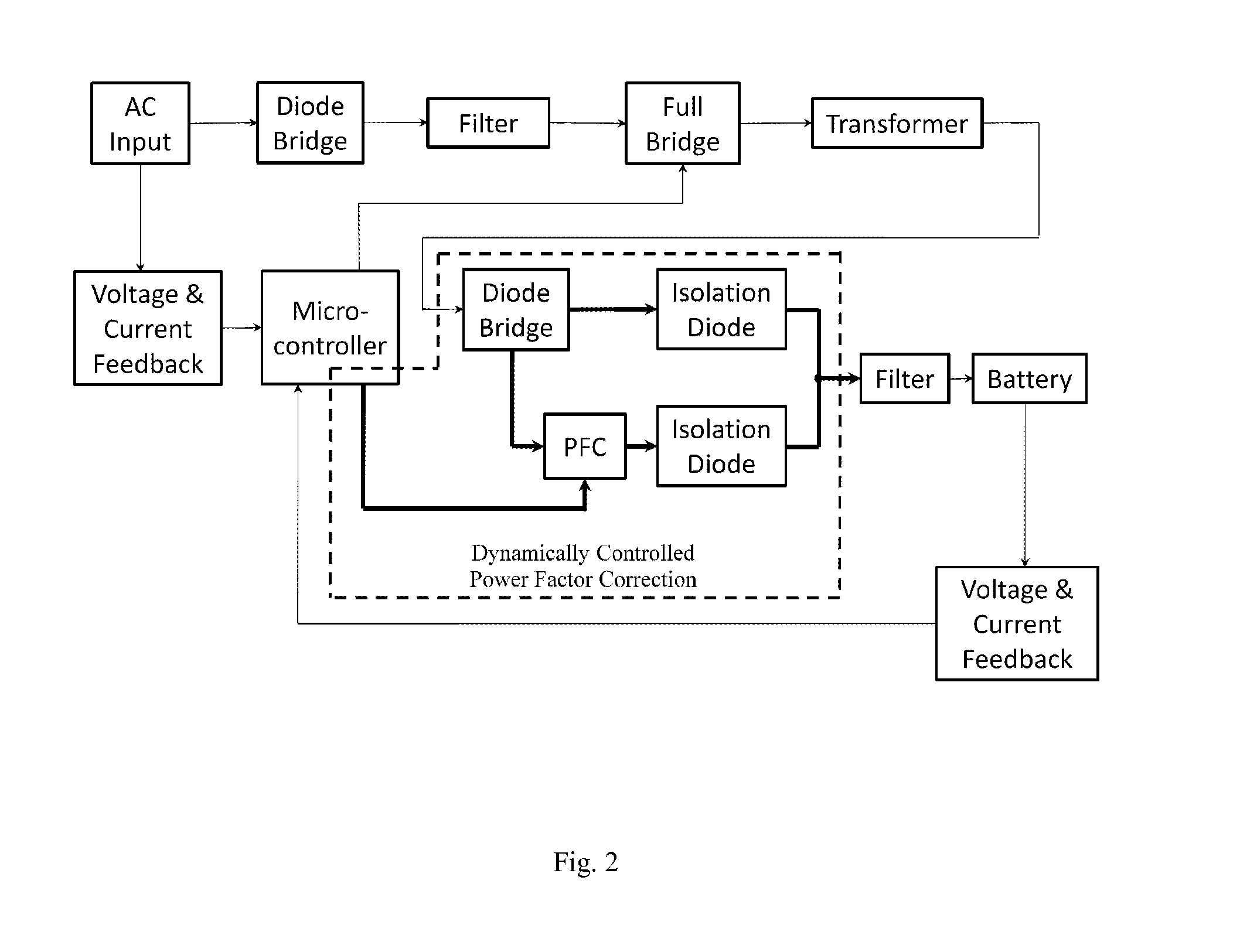Parallel Boost Unity Power Factor High Power Battery Charger
a high-power battery charger and unity power factor technology, applied in the field of power electronics, can solve the problems of large amount of power dissipation on the charger itself, waste of power, difficult thermal management, etc., and achieve the effects of high power factor, high efficiency and high power factor
- Summary
- Abstract
- Description
- Claims
- Application Information
AI Technical Summary
Benefits of technology
Problems solved by technology
Method used
Image
Examples
Embodiment Construction
[0013]Referring to the invention in more details in FIGS. 1 and 2, note that the main difference between the present invention (FIG. 2) and a typical full power PFC design (FIG. 1) is the location of the power factor correction circuit. The power factor circuit in the present invention is placed in parallel with a bypassing diode, at the output of the full bridge converter. This change allows the dynamic control of whether or not the charging current passes through the power factor correction circuit. Furthermore, the power factor circuit will only be activated when necessary to facilitate charging of the battery, minimizing the amount of power that must pass through the power factor correction circuit.
[0014]The present invention brings many production advantages over a typical full power PFC design. Unlike the full power PFC booster in the conventional two stage designs (a PFC booster followed by a full bridge DC / DC converter), the dynamic PFC circuit in this invention, as a partia...
PUM
 Login to View More
Login to View More Abstract
Description
Claims
Application Information
 Login to View More
Login to View More - R&D
- Intellectual Property
- Life Sciences
- Materials
- Tech Scout
- Unparalleled Data Quality
- Higher Quality Content
- 60% Fewer Hallucinations
Browse by: Latest US Patents, China's latest patents, Technical Efficacy Thesaurus, Application Domain, Technology Topic, Popular Technical Reports.
© 2025 PatSnap. All rights reserved.Legal|Privacy policy|Modern Slavery Act Transparency Statement|Sitemap|About US| Contact US: help@patsnap.com



